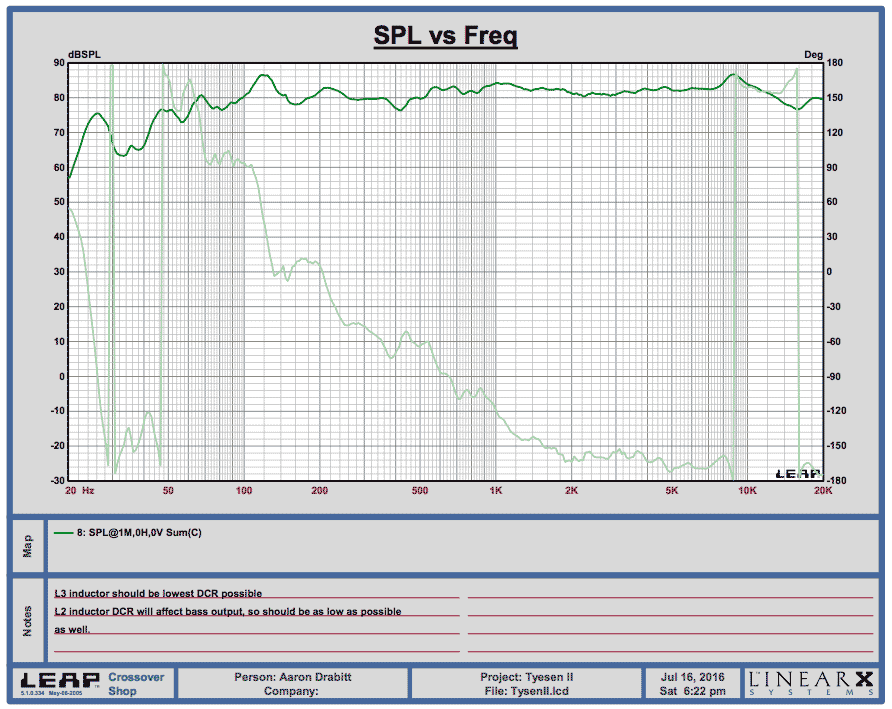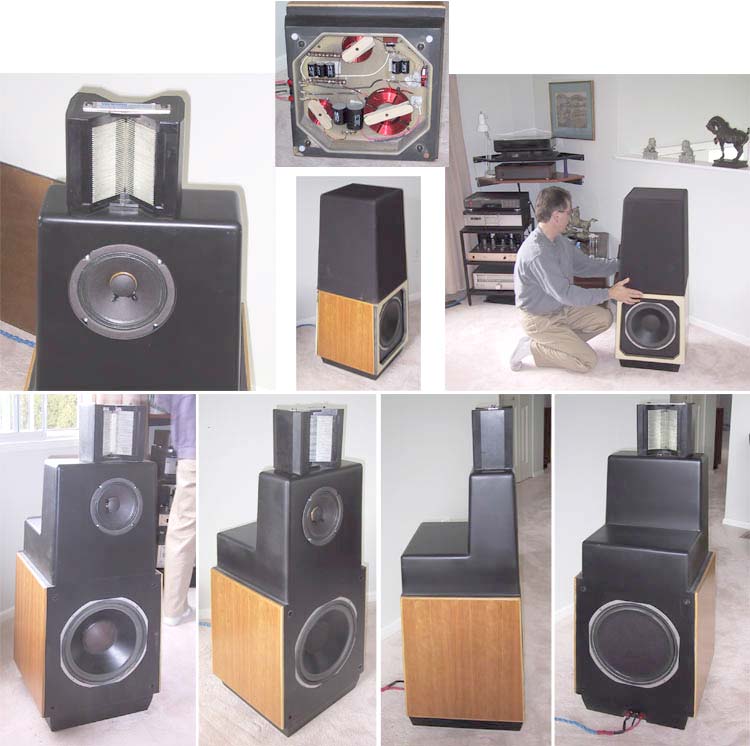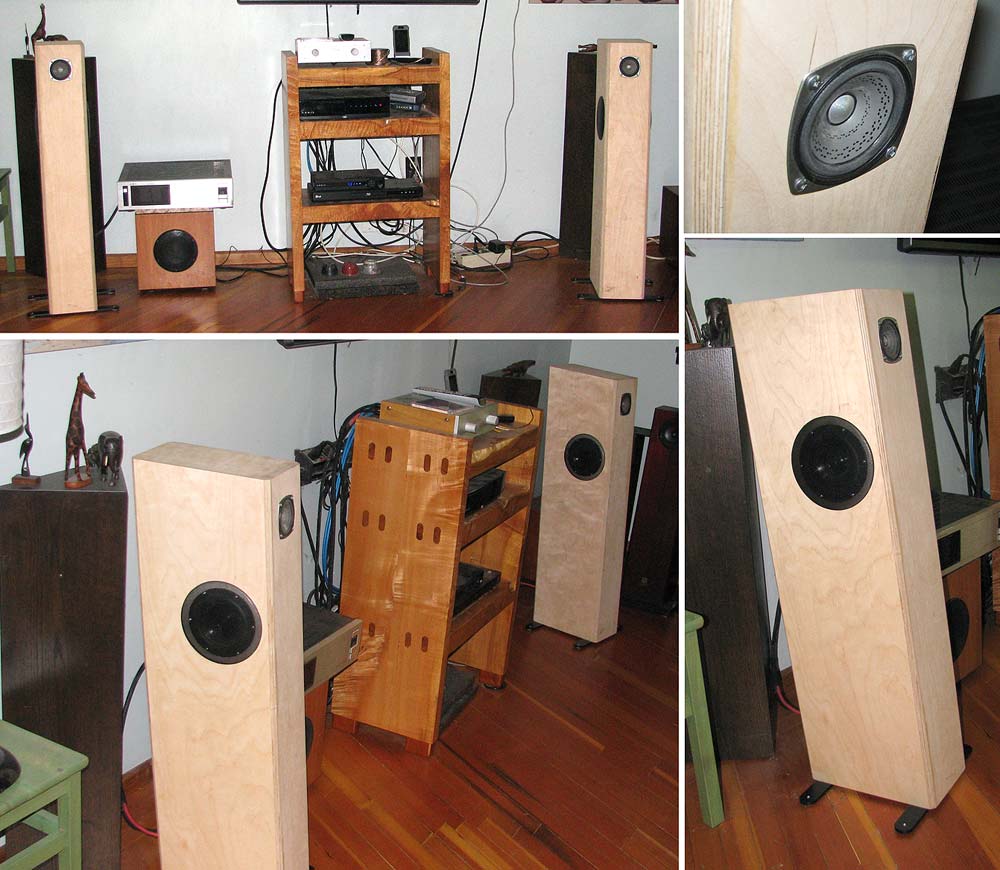Hi,
As I moved to another apartment, it is very likely that my wide OB will have to go. Space and WAF dictate for a slim design. I see that something along the lines of Tyseen V2 could fit, albeit with different drivers: Woofers would be Visaton w170s, while the fullrange would be Visaton frs8 or eventually CSS125fr.
What do you think? If not, any idea of a similar design? Waf is a priority, it can be tall and deep but it must be slim. Doesn't have to be efficient but it has to hit low. Most likely will have jfet active crossover/biamped. Any ideas?
As I moved to another apartment, it is very likely that my wide OB will have to go. Space and WAF dictate for a slim design. I see that something along the lines of Tyseen V2 could fit, albeit with different drivers: Woofers would be Visaton w170s, while the fullrange would be Visaton frs8 or eventually CSS125fr.
What do you think? If not, any idea of a similar design? Waf is a priority, it can be tall and deep but it must be slim. Doesn't have to be efficient but it has to hit low. Most likely will have jfet active crossover/biamped. Any ideas?
how does the side firing woofers compares with front firing woofers that we normally see?
how low does the MLTL silver flute goes?
how does this compares with low end of alpair 10.3 MLTL or FHXL?
how low does the MLTL silver flute goes?
how does this compares with low end of alpair 10.3 MLTL or FHXL?
Hi,
As I moved to another apartment, it is very likely that my wide OB will have to go. Space and WAF dictate for a slim design. I see that something along the lines of Tyseen V2 could fit, albeit with different drivers: Woofers would be Visaton w170s, while the fullrange would be Visaton frs8 or eventually CSS125fr.
As long as you make the box wide enuff and adjust the bass to accomodate the Visaton the same design theme should work well.
dave
how does the side firing woofers compares with front firing woofers that we normally see?
They work fine. Side mounting allows us to mount them push-push for the reactive load cancelation and the thin front profile.
how low does the MLTL silver flute goes?
Sim with cross-over based on real world measurements.

how does this compares with low end of alpair 10.3 MLTL or FHXL?
We haven’t done a direct comparison and currently don’t have FHXL w A10.3 to compare it with. Both are very good.
dave
Well, you do have XLs with Pluvia11s, which some folks might consider cut from sufficiently "similar cloth" to make generalizations.
From my brief experience with the two designs - actually XLs with A10.3 and 10P, but not yet the P11 - I'd opine that the side-firing bipole radiation pattern of the Tysens would make perceived low end performance even more room / placement dependent than the horns. Of course, Dave's room is large and sparsely furnished enough for that to be less of an issue than either of my own.
From my brief experience with the two designs - actually XLs with A10.3 and 10P, but not yet the P11 - I'd opine that the side-firing bipole radiation pattern of the Tysens would make perceived low end performance even more room / placement dependent than the horns. Of course, Dave's room is large and sparsely furnished enough for that to be less of an issue than either of my own.
Dave,
I know you built a lot of speakers. Even though there may be some better sounding speakers than Tysen V2, they have very good Waf and have the preferred dimensions, so I may build something like these, so they will fit in my living room and wouldn't draw attention, so my wife wouldn't object.
But, I can't resist asking a question: If you directly compare them with a FAST MTM with similar drivers, but which is wide and shallow, how could you descrice the difference in sound quality? I guees there should't be a lot of difference, but still...
Thanks 🙂
I know you built a lot of speakers. Even though there may be some better sounding speakers than Tysen V2, they have very good Waf and have the preferred dimensions, so I may build something like these, so they will fit in my living room and wouldn't draw attention, so my wife wouldn't object.
But, I can't resist asking a question: If you directly compare them with a FAST MTM with similar drivers, but which is wide and shallow, how could you descrice the difference in sound quality? I guees there should't be a lot of difference, but still...
Thanks 🙂
MTM or woofer on the side. It is hard to say… but we do plan on doing another version of this box as an MTM.
I can certainly talk about the different trade-offs.
With drivers on the sides they can be mounted push-push to take advantage of the active vibration cancelation. On the other hand with an MTM you don’t have to worry about listening to the way off-axis of the side firing woofers (i was quite amazed at how high Aaron crossed these over, just under 500 Hz/passive XO), and you can get the drivers closer together, and with the wider box a lower XO would be fine.
Our purpose with for trying the wider MTM is that it should be an easier build (but maybe not due to the midTL in the middle).
While this might not be the highest performance (don’t think they aren’t good), the parts are cheap. And similar could be built with a less costly midTweeter if budget is really tight, The passive XO has some big parts in it so if you go all aor core and poly caps (as we did) it is going to be cheaper to bi-amp with a PLLXO.
dave
I can certainly talk about the different trade-offs.
With drivers on the sides they can be mounted push-push to take advantage of the active vibration cancelation. On the other hand with an MTM you don’t have to worry about listening to the way off-axis of the side firing woofers (i was quite amazed at how high Aaron crossed these over, just under 500 Hz/passive XO), and you can get the drivers closer together, and with the wider box a lower XO would be fine.
Our purpose with for trying the wider MTM is that it should be an easier build (but maybe not due to the midTL in the middle).
While this might not be the highest performance (don’t think they aren’t good), the parts are cheap. And similar could be built with a less costly midTweeter if budget is really tight, The passive XO has some big parts in it so if you go all aor core and poly caps (as we did) it is going to be cheaper to bi-amp with a PLLXO.
dave
What Dave says about the economics of passive networks is certainly true. As it so happens with these, Aaron wanted to try something novel which resulted in a higher part count (and cost) in the resonant & trap node than the actual basic roll off. His explanation of the approach was more than geeky enough to make me a bit sleepy, and which along with the circuit schematic he might not care to share in full, but the results speak for themselves.
Of course, while I've been happy with either the uber-frugal PLLXO/Active and the much more expensive passive speaker level approach, there are old school folks for whom even when at a lower cost the former - or modern DSP - is outside of their comfort zone.
Just working some more on the Tysen II which uses the F85 Fostex driver. I’m trying a somewhat novel approach to the XO design which was inspired by Joe Rassmussen’s concepts of XO design. It’s a fairly asymmetrical slope that relies little on “conventional” XO techniques, but uses resonant circuits and EQ traps to contour response and control XMAX
Of course, while I've been happy with either the uber-frugal PLLXO/Active and the much more expensive passive speaker level approach, there are old school folks for whom even when at a lower cost the former - or modern DSP - is outside of their comfort zone.
Member
Joined 2009
Paid Member
Joe XO?
The passive XO done by Aaron in Tysen V2 works well.
We will also try the Alpair 5.2eN in place of rg eFF85wKeN in these, passive will need reworking.
dave
The passive XO done by Aaron in Tysen V2 works well.
We will also try the Alpair 5.2eN in place of rg eFF85wKeN in these, passive will need reworking.
dave
Aaron's XO worked very well indeed - as has every design of his I've built, as far back as the ESS AMT modified to 3-way. Now, that was a fun exercise in shoehorning a midrange into the same sized / shaped enclosure to fit grilles that were rebuilt to the original size - before proceeding with new boxes.
Turned out OK

Turned out OK

Member
Joined 2009
Paid Member
Joe XO?
Post #30 references Joe Rassmussen
will be interested to hear your impressions of the Alpair 5.2 vs the Fostex as you've liked that Fostex driver for many builds so far that I've read.
Personally, I rather prefer the Alpair to the FF85WK, although so far we've only used it solo in a series of small bookshelf sized and the FH Lite.
It's been quite some time since the earlier model of Alpair5, during which interim team Mark have made several improvements to all the other model sizes, but I wonder how far up the line the single suspension design will be feasible.
It's been quite some time since the earlier model of Alpair5, during which interim team Mark have made several improvements to all the other model sizes, but I wonder how far up the line the single suspension design will be feasible.
Did you manage passive Tysen with Alpair 5 based on Aaron passive crossoverJoe XO?
The passive XO done by Aaron in Tysen V2 works well.
We will also try the Alpair 5.2eN in place of the FF85wKeN in these, passive will need reworking.
dave
Last edited by a moderator:
Is it Aaron passive crossover first order on fullrange and first order for woofer?I have asked Scott but looks like i need to poke him again.
dave
- Home
- Loudspeakers
- Full Range
- WAW / FAST MTM MLTL crossover point/s
